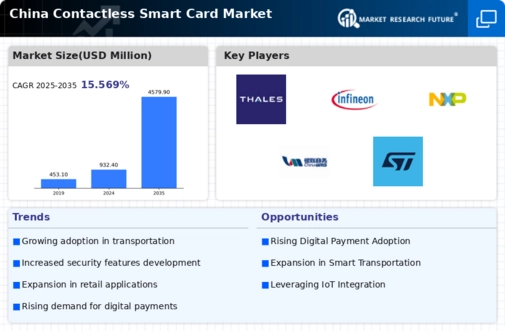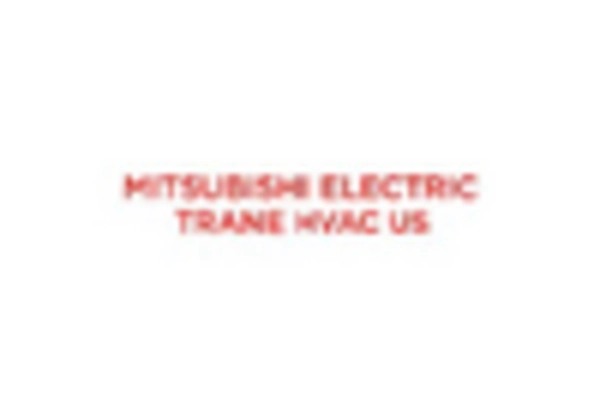Increased Focus on Health and Hygiene
The heightened focus on health and hygiene in China is influencing consumer preferences towards contactless payment methods. As individuals become more conscious of minimizing physical contact, the demand for contactless smart cards has surged. This trend is particularly evident in sectors such as retail and public transportation, where contactless payments reduce the need for cash handling and physical card swiping. In 2025, it is expected that the contactless smart-card market will see a growth rate of approximately 15% as consumers prioritize health-conscious payment options. This shift not only reflects changing consumer behavior but also encourages businesses to adopt contactless solutions to meet evolving expectations.
Government Initiatives and Regulations
Government initiatives in China aimed at promoting digital payments are significantly impacting the contactless smart-card market. The Chinese government has been actively encouraging the adoption of cashless payment systems to enhance financial inclusion and streamline transactions. Policies that support the development of smart payment technologies are likely to foster innovation within the contactless smart-card market. For instance, the government has set ambitious targets for the digital economy, aiming for a substantial increase in the use of electronic payments by 2025. This regulatory environment not only boosts consumer confidence but also incentivizes businesses to adopt contactless smart-card solutions, thereby expanding the market further.
Rising E-commerce and Online Retail Growth
The rapid growth of e-commerce and online retail in China is a significant driver for the contactless smart-card market. As more consumers turn to online shopping, the demand for seamless payment solutions has increased. Contactless smart cards offer a convenient way to complete transactions both online and in physical stores. In 2025, it is anticipated that e-commerce sales will account for over 30% of total retail sales in China, further fueling the need for efficient payment methods. This trend encourages retailers to adopt contactless smart-card solutions to enhance customer experience and streamline payment processes, thereby expanding the market.
Growing Demand for Contactless Transactions
The increasing demand for contactless transactions in China is a primary driver for the contactless smart-card market. As consumers seek faster and more convenient payment methods, the adoption of contactless technology has surged. In 2025, it is estimated that over 60% of all card transactions in urban areas will be contactless. This shift is largely influenced by the rapid urbanization and the growing middle class, which is more inclined towards digital payment solutions. The contactless smart-card market is expected to benefit significantly from this trend, as businesses and financial institutions invest in infrastructure to support these transactions. Furthermore, the convenience of contactless payments aligns with the preferences of younger consumers, who prioritize speed and efficiency in their purchasing experiences.
Technological Advancements in Card Manufacturing
Technological advancements in card manufacturing are propelling the contactless smart-card market forward. Innovations in materials and production techniques have led to the creation of more durable and secure cards. For example, the introduction of advanced chip technology enhances the security features of contactless cards, making them more appealing to consumers and businesses alike. In 2025, it is projected that the market for smart cards in China will reach approximately $3 billion, driven by these technological improvements. As manufacturers continue to invest in research and development, the contactless smart-card market is likely to see a proliferation of new products that meet the evolving needs of consumers.
















Leave a Comment